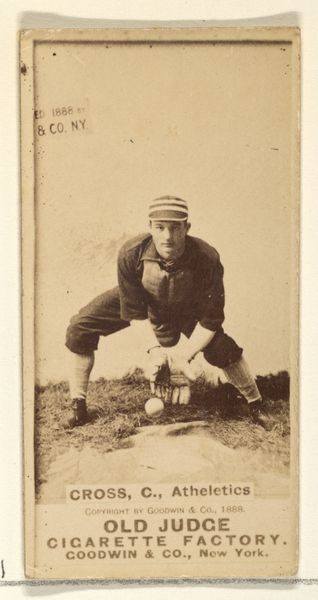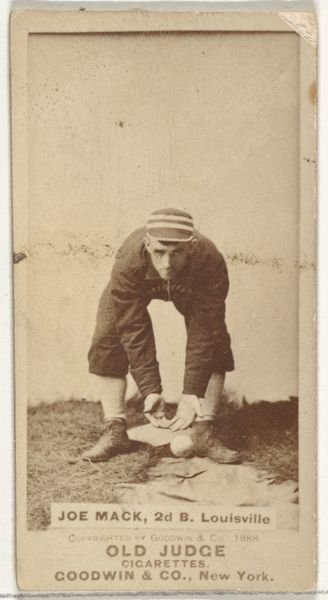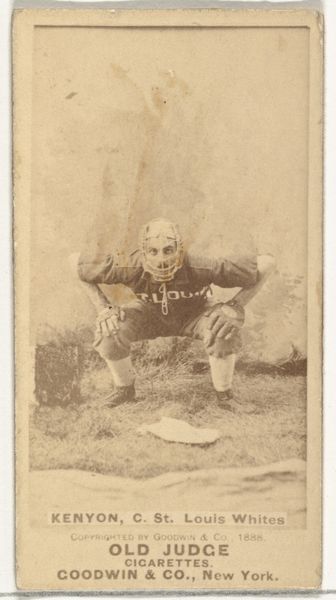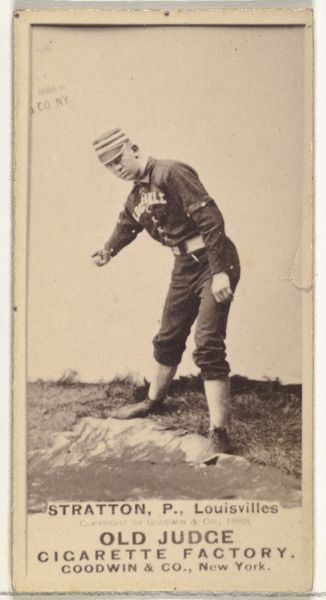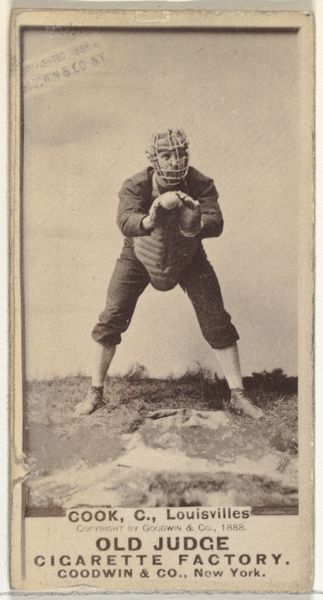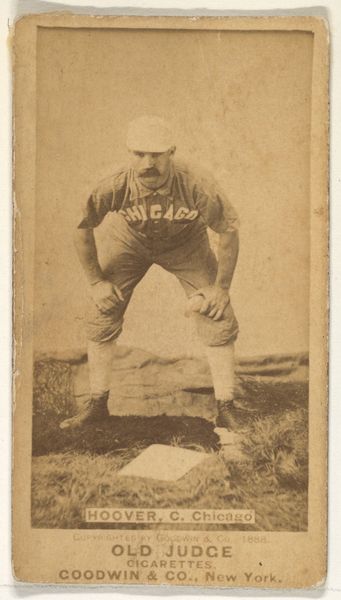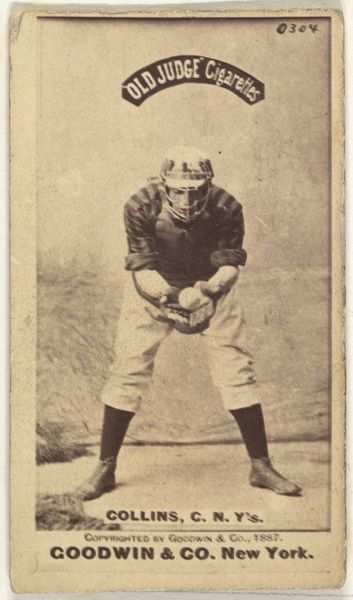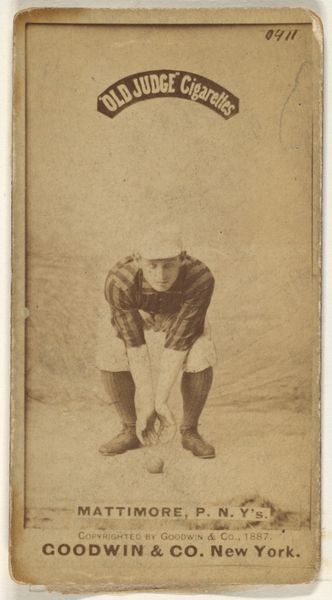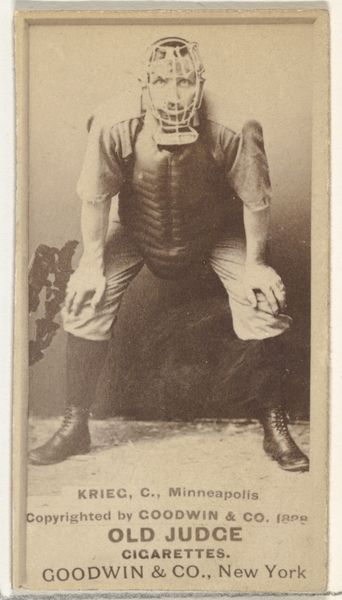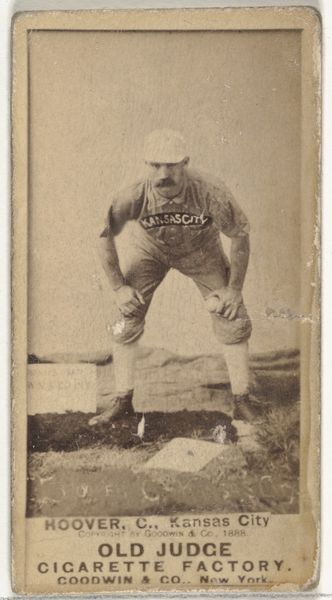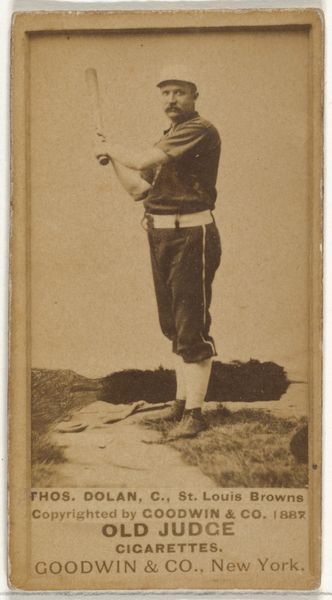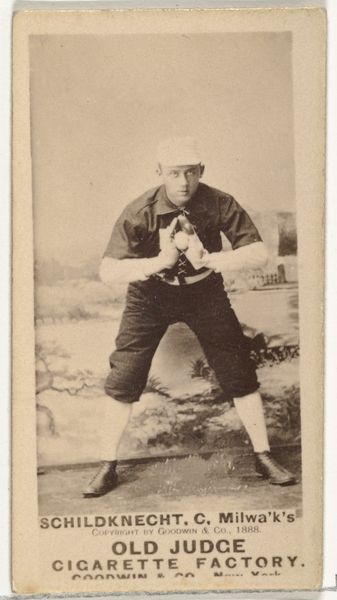
John Nelson Kerins, Catcher, Louisville Colonels, from the Old Judge series (N172) for Old Judge Cigarettes 1888
0:00
0:00
drawing, print, photography, albumen-print
#
portrait
#
drawing
# print
#
baseball
#
photography
#
19th century
#
men
#
athlete
#
albumen-print
Dimensions: sheet: 2 11/16 x 1 3/8 in. (6.9 x 3.5 cm)
Copyright: Public Domain
Editor: This is "John Nelson Kerins, Catcher, Louisville Colonels," a baseball card from the Old Judge series, made in 1888 by Goodwin & Company. It's an albumen print, so technically a photograph. It feels… staged, I guess, like he was asked to pose like he was catching. What do you make of it? Curator: Immediately, I'm drawn to the context of its production. An albumen print—labor-intensive process, requiring skilled hands. Why this specific medium for a baseball card? Because photography conferred authenticity, supposedly capturing the 'real' player for marketing purposes, linking sport, consumption, and manufacture through the tobacco industry. The baseball player, like the laborer, is part of commodity culture, isn't he? How is the act of photographing for commercial gain a process that impacts representation? Editor: So you’re saying that this isn’t just about baseball or portraiture, but also about how it was made to sell cigarettes. It's interesting to consider it as a product of industry. But shouldn't we focus on his athletic ability? Curator: His athleticism is packaged as a commodity, reduced to this single pose. The materiality of the card itself–the paper, the photographic chemicals, the ink of the print–all speak to a larger system of labor, extraction, and consumption that goes far beyond sport, impacting the sport itself through monetization. Where was the paper sourced? What were the labor conditions in that photographic studio? These questions are inherently part of its story. Editor: I hadn't really considered that before. It gives the image so much more depth when you consider what it took to produce. Curator: Precisely! Recognizing these layers helps us dismantle assumptions about art being detached from everyday life and social relations. This challenges how we value this kind of printed artwork, wouldn't you agree?
Comments
No comments
Be the first to comment and join the conversation on the ultimate creative platform.
